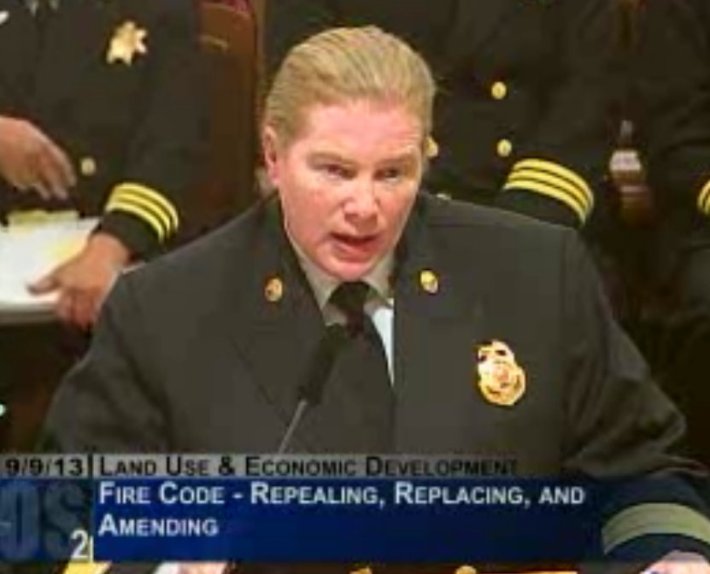The SF Fire Department tried to delete an amendment to the fire code that would allow city agencies greater flexibility in widening sidewalks to improve pedestrian safety, according to Supervisor Scott Wiener, who championed the measure.
The measure was approved unanimously by the Board of Supervisors and signed into law by Mayor Ed Lee this summer. However, SFFD and the Fire Commission apparently removed the provision from a routine update to the fire code submitted to the board's Land Use and Economic Development Committee on Monday.
Wiener told the SF Chronicle that he was "surprised and disappointed" to learn that SFFD had deleted the provision. SFFD's end-run around the pedestrian safety reform ultimately failed: Wiener's measure was reinstated in the fire code update passed by the committee and expected to be approved by the full board. While Wiener emphasized his support for the SFFD and the need for fire truck access, he said the department is "on a collision course with the broadly supported goal of pedestrian safety."
SFFD officials made no mention of the issue in discussions at the hearing, even after Wiener called out the attempted deletion. Discussion of the fire code was dominated by a proposed requirement for firefighter air replenishment tanks in new high-rise developments.

Contention about minimum road widths has commonly arisen in plans for pedestrian-friendly street redesigns such as the developing plan for a block of Bartlett Street in the Mission. SFFD officials have protested the 14-foot-wide roadway in the plan, which would be narrower than the traditional minimum of 20 feet, claiming that it would impede fire trucks. The new fire code would allow roadways as narrow as 12 feet, so long as curbs are no higher than six inches and free of vertical obstructions, much like the requirements used by many cities around the country. Wiener has called the 20-foot minimum "one-size-fits-all" and "suburban in nature," and has pointed out that fire trucks successfully navigate narrower San Francisco streets on a regular basis.
Even after the new roadway minimum is officially included in the fire code, however, SFFD could continue to put pressure against pedestrian safety projects. According to sources who have been involved in street redesigns, the department has even protested against plans to replace parked cars with curb extensions of the same width.
"This is not an isolated incident," said Leah Shahum, executive director of the SF Bicycle Coalition, who told the Supervisors committee she'd like to hear answers on the issue from Fire Chief Joanne Hayes-White. SFFD staff never addressed the matter.
"In my 10+ years working with the San Francisco Bicycle Coalition for safer streets, we see it time and time again ... the fire department stepping in and either slowing down or, worse, blocking" projects, said Shahum. "At times I'd even say there's a chilling effect, where certain departments don't even bring forward a safety proposal because they believe the fire department's going to shut it down."
"There's absolutely no argument regarding the importance of maintaining and ensuring vehicle access for the Fire Department to both protect and save lives," said Natalie Burdick of Walk SF, who argued that the new minimum balances that goal with removing "a clear barrier to the city's stated goal to save lives."
Wiener said he sees the controversy as a "respectful disagreement" between allies.
"I'm confident that the fire department's position comes from a place of integrity in terms of wanting what's best for the city, and so does the other side," said Wiener. "I hope that we can have a very substantive dialogue moving forward on ensuring that we are protecting our pedestrians and having good fire safety in the city."





